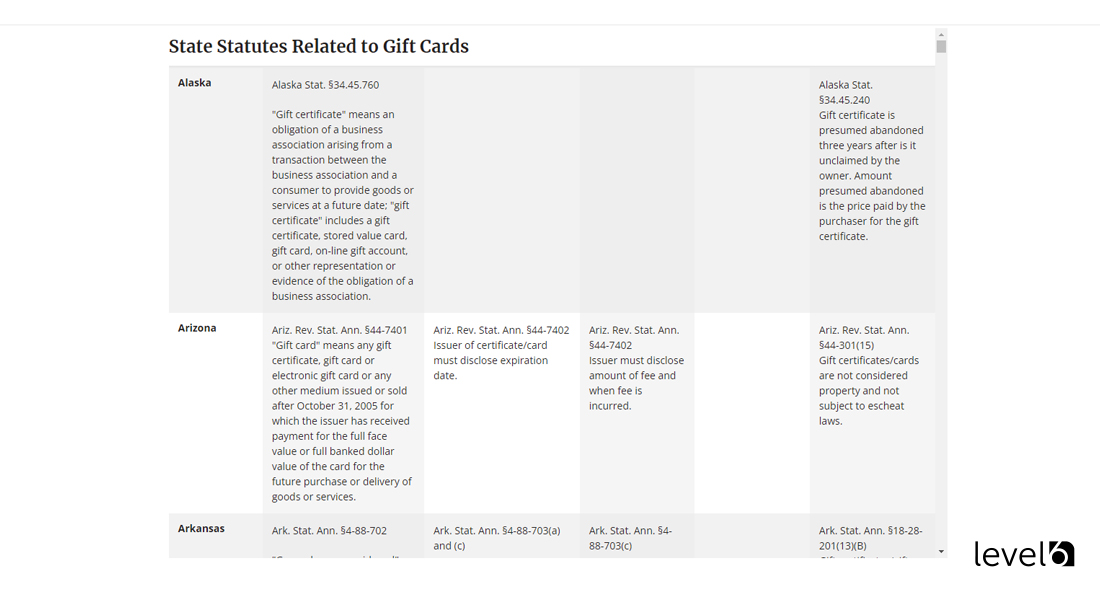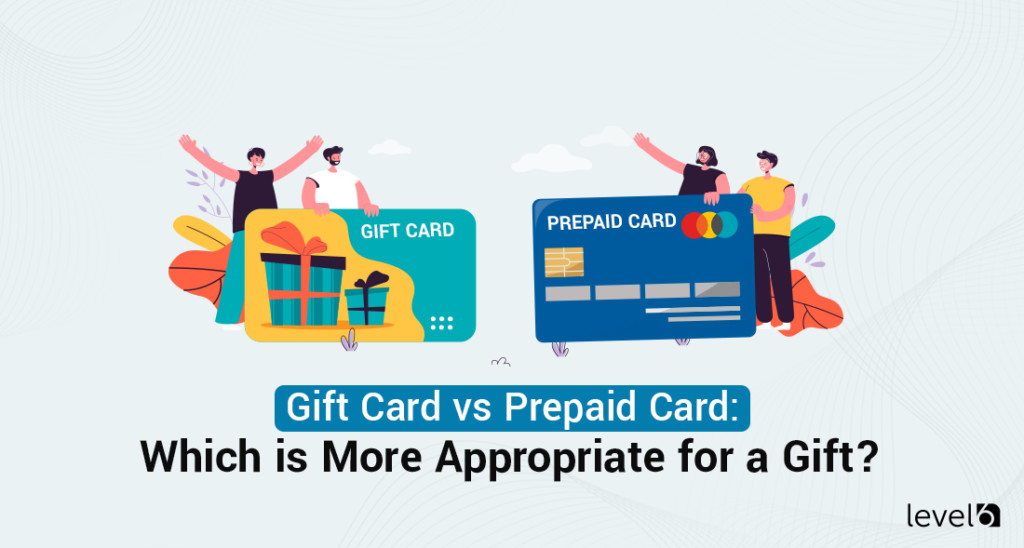While there’s a lot to be said for reloadable debit cards, they’re not the perfect solution for every type of business. Sometimes, using a gift card can have some benefits, especially for small businesses.
In today’s post, we’ll take a look at the pros and cons of starting and using gift cards for small businesses and exactly when and how they can garner rich returns for the business owner.
The Pros of Using Gift Cards for Small Businesses
Increased sales are the most important reason to start a gift card program. That’s the bottom line. Gift cards arranged on the till counter may look pretty and convenient for your customers, but at the end of the day, unless they make money for you, they’re not doing what they should.
If you’re a small business, there are several pros of implementing a gift card program:
- They let you compete with bigger national stores.
- They attract new customers.
- They increase brand awareness with new and existing customers.
- Gift cards are the most popular items on wish lists.
- Shoppers spend more with gift cards than when they’re spending their own money.
- Unused gift cards are pure profit.
- Studies show that every gift card has the potential to bring at least two customers into your business.
- It’s a great way to build relationships with your customers.
They let you compete with bigger national stores. Gift cards have an advantage over bigger national stores when it comes to gift giving, as consumers value convenience over uniqueness. This is true especially for last-minute gift giving when what’s close and easy to immediately purchase lets someone complete their gift shopping before they run out of time.
Gift cards attract new customers who come with a mindset of choosing, not buying. These customers feel like they’re getting something for free and most enjoy looking at all the options available before making their final shopping decision. This is a unique way to get new customers familiar will all that you offer.
Both physical and digital gift cards increase brand awareness with new and existing customers by acting as brand ambassadors. They are “quite literally, the face of your store on every channel: online, in your brick and mortar locations, and on social media.”
Rise.ai recommends spending about 15 minutes putting yourself in your customer’s shoes when it comes to designing the graphics and text you’ll put on your gift card. Try to capture the emotions your customer might feel and the images your products or services might bring to mind.
Looking to learn more about an incentive, rebate
or reward program for your business?
Curious about costs?
Try our instant pricing calculator:
To take this one step further, consider letting your customer customize the look of any digital gift cards you offer. It would be too costly to make this offer for a physical card, but the sky is the limit with digital cards!
Fifty-six percent of shoppers surveyed in 2022 say gift cards are the most popular item on their wish list. That’s more than:
- Clothing and accessories (52%)
- Books, movies, music, and video games (35%)
- Electronics (29%)
- Home decor (24%)
- Jewelry (23%)
- Personal care or beauty items (21%)
- Sporting goods (18%)
- Home improvement items (17%)
That works out well, as 62% of consumers plan to give gift cards. Gift card shopping volume is highest between November and December, with 50% of yearly sales happening in that short period. The other 50% of gift card sales happen between January and October.
Almost 70% of gift card recipients spend 60% more than the value of the gift cards than when they’re spending their own money. Most people consider the items they’re looking at as “free” and are open to you upselling “additional services.”
Shockingly, USA Today reports that 47% of gift cards go unused, which translates into pure profit for the store owner. A CreditCards.com survey found that the total value of unused gift cards, vouchers, and stores is $21 billion in the States.
On average, in 2022, each person has $175 in these cards, $61 more than the amount from the year before. On average, millennials have $226 in used credit, and Gen Zers have $149 in unused credit.
Studies show that every gift card has the potential to bring at least two customers into your place of business. The gift giver will visit your store to purchase the gift card, and the recipient will visit your store to spend the card.
Gift cards are a great way to build relationships with your customers. For example, you can award gift cards to customers who spend a specified amount or as a promotion based on the number of gift cards someone buys.
As well, when you’re handed a gift card as payment for a purchase, it’s easy and natural to strike up a conversation — “How nice to shop with a gift card? Was this for a special occasion?” Gift cards are a great jumping-off point to get to know your customers on a more personal level.
Paystone recently released these impressive statistics on the benefits of launching a gift card program. According to their research, the way gift card programs can benefit you include:
- 55% of gift card recipients will come into your store more than once to spend the entire card.
- 41% of those who receive a gift card have never been in your store before.
- 59% of people who use a gift card in your store spend more than the value of the card.
- 30% of gift card balances never get used, and that money belongs to you.
The Cons of Using Gift Cards for Small Businesses
With all the pros we’ve found for small businesses using gift cards, are there any cons to offering them to your customers? We didn’t find many reasons for dismissing gift cards out of hand, but there are a few reasons why not everyone would choose to purchase a gift card that benefits your business.
It’s worth noting that not every gift card can be used in every store. Many gift cards are issued by either Mastercard or Visa, and these cards can be used pretty much anywhere.
But there are a good number of store-specific cards. Store-specific gift cards can only be used at certain retailers, and the ones that are purchased may not benefit you and your store.
Even though gift cards are hugely popular, some people feel that giving a gift card can look like a lazy gift. While that may be true, the statistics on which demographics buy gift cards are still highly encouraging:
- Millennials account for 37% of all gift card buyers.
- Gen Xers make up 28% of all gift card buyers.
- Baby boomers make up 25% of all gift card buyers.
Reasons to Offer Gift Cards to Your Customers
Understanding the gift card and incentive card market dynamics is key when it comes to small business success by using gift cards. From understanding key trends and drivers of the market to forecasting future growth, it is important to stay abreast of the changes in order to form a successful strategy.
As consumer attitudes and behavior continue to shift, staying on top of the trend is more important than ever.
To understand the market better, here are some of the key performance indicators (KPIs) that will help you create an effective plan:
- Size of the market: Knowing how big the market is and how fast it’s growing can help you understand where your business fits into the overall industry.
- Sales by channel: It is important to understand the difference between online and offline sales as well as 1st party versus 3rd party sales.
- Load size and usage frequency: Understanding the average load size and usage frequency of gift cards can help you better target potential customers.
- Promotional activity: Keeping track of promotional activities in the marketplace can help you determine which offers and incentives are most successful.
- Redemption rate: Knowing how often customers use their gift cards can provide insight into customer satisfaction with your product.
- Transaction volume: Tracking transaction volume over time can help you identify patterns in customer behavior.
By utilizing these key performance indicators, you can start to develop a better understanding of the gift card market and make informed decisions about how to best utilize gift cards in your business strategy. And with this information, you can begin to develop an effective plan for offering gift cards to your customers and seeing success.
Open-Loop and Closed-Loop Gift Cards
When considering which type of gift card to offer, businesses must decide between open-loop and closed-loop gift cards. As mentioned above, open-loop cards can be used at any business that accepts them, while closed-loop cards can only be used at the issuing business or with its affiliates.
The type of gift card you choose should depend on your business’s needs and goals. If you want your customers to be able to shop anywhere and are looking for more flexibility in where their cards can be used, open-loop cards may be the best choice.
Open-loop cards can also help to promote brand recognition since they are accepted by more vendors.
On the other hand, if you would prefer that your customers only use the card at your business or affiliated businesses, closed-loop cards are the way to go. Closed-loop cards are often more cost-effective for businesses as well since there are usually no processing fees associated with them.
Businesses should also consider the cost of the cards themselves and how much is included in the card when determining which type of gift card to offer. Open-loop cards tend to be more expensive due to the processing fees associated with them, while closed-loop cards can come with a variety of features that make them attractive to customers, such as discounts or special offers.
It’s important to consider all factors when deciding which type of gift card is right for your small business. Consider what your goals are and how much you’re willing to spend to achieve them before making a decision.
Open-loop gift cards usually have the company’s name printed on the front of the card and are redeemable wherever the associated credit card is accepted. Branded prepaid cards are a great choice for businesses that don’t want to sell gift cards but want to give them away as customer rewards.
If you’re ordering less than 50 cards, you can order personalized or predesigned consumer Visa gift cards. If you’re ordering over 50 cards, we recommend buying them as bulk gift cards.
Understanding Federal and State Regulations on Gift Cards
When you’re setting up a gift card program, the first step is to understand two important and relevant federal regulations.
The first regulation that’s critical to familiarize yourself with is the Credit Card Accountability Responsibility and Disclosure Act of 2009 (CARD). The Act sets standards and consumer protections for gift cards.
Title IV — Gift Cards, adds a new section 915 about “General-use prepaid cards, gift certificates, and store gift cards.” The Act deals specifically with dormancy fees, inactivity charges or fees, exclusions, and disclosures.
In a nutshell, these are the rules around gift cards:
- You may not charge any fees unless the card hasn’t been used within the span of one calendar year. You can’t charge more than one fee in a month, and the buyer needs to be able to read the terms before they purchase the card.
- You may not impose an expiration date of fewer than five years. Again, make sure the expiration date is clearly disclosed prior to purchase.
- If you clearly include an explanation of how fees are calculated, you may charge activation or reload fees.
- These rules don’t apply to prepaid phones, promotional gift cards, loyalty cards, or paper gift certificates. If you give a customer a gift card for free, you may then put an expiration date on the card and charge fees.
- If there’s a discrepancy between the federal and state rules, the “more stringent” rule will trump.
It’s important to know that gift card laws vary by state. The rules for Arkansas are different from California, so you’ll need to check the Gift Cards and Gift Certificates Statutes and Legislation updated in 2016.
In Arkansas, you can put a two-year expiration date on any gift card if the disclosure is “printed clearly in a conspicuous place on the front or back of the gift card. As well, if the card hasn’t been used before two years, the card may be “subject to a post-sale fee.” No notes are made on whether the card is redeemable for cash.
In California, you can’t impose an expiration date on a gift card, according to California Civil Code 1749.5. You may impose a dormancy fee, but all other fees are prohibited, and any gift card sold after January 1, 1997, is redeemable for cash.
How to Set Up Program Options for Gift Cards
According to the QuickBooks Blog, you can “jumpstart” your gift card program in five easy steps:
- Choose a gift card processor
- Order the physical gift cards
- Input the cards into your system
- Establish policies for your team
- Start selling and tracking!
We pride ourselves on making fully-managed incentive programs easy for you by effectively becoming your Program HQ. If you’re looking for a solution to any of your rewards programs, check here for our competitive pricing!

Claudine is the Chief Relationship Officer at Level 6. She holds a master’s degree in industrial/organizational psychology. Her experience includes working as a certified conflict mediator for the United States Postal Service, a human performance analyst for Accenture, an Academic Dean, and a College Director. She is currently an adjunct Professor of Psychology at Southern New Hampshire University. With over 20 years of experience, she joined Level 6 to guide clients seeking effective ways to change behavior and, ultimately, their bottom line.

 Demo
Demo







